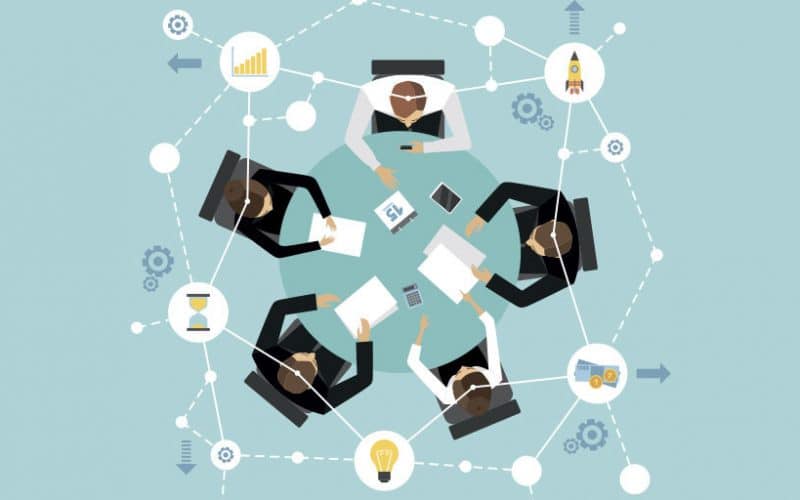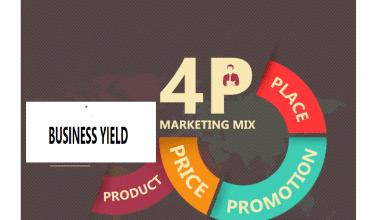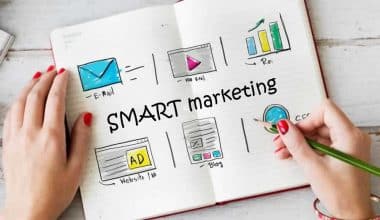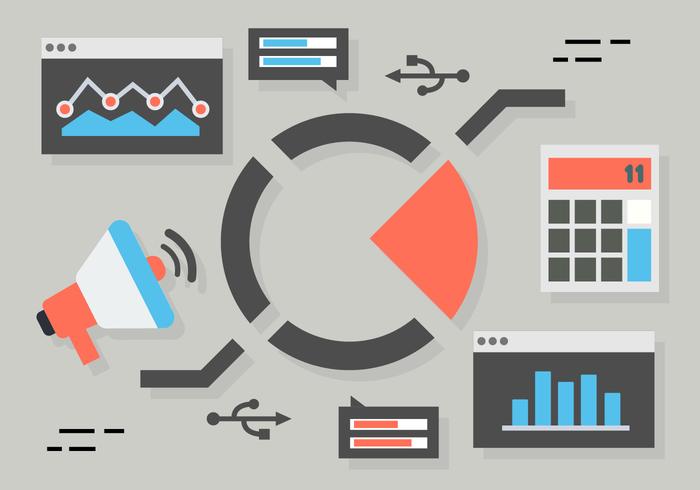The sales procedure has evolved. Before engaging with a vendor, today’s modern buyer is more digitally connected and conducts more independent research. As a result, firms must adopt modern selling tactics to build value-based connections with buyers.
So, for sellers to effectively find, connect, and engage with modern buyers, sales, marketing, and sales enablement managers must be creating a sales enablement framework and strategy that provides the appropriate training, provides access to a variety of content, and leverages cross-functional collaboration to assist sellers at every stage of the sales cycle. So, learn how to create, build, implement, and scale your sales enablement strategy with our step-by-step guide.
What is Sales Enablement?
Sales enablement is the purposeful, continuing process of providing sales teams with the knowledge, direction, and training they require to engage customers effectively. Sales enablement strategy delivers data-driven insights to marketing and sales teams to optimize their business and create revenue.
Creating a sales enablement strategy improves the effectiveness of sales teams by:
- Introducing vendors to the most relevant material for each buyer interaction
- Making it possible for customers to view content in a variety of ways
- Providing real-time insight on whether or not customers find the material interesting
- Using advanced analytics to optimize pitches and content
- Providing sellers with the necessary training and monitoring the effectiveness of such training in terms of bottom-line results.
Read Also: Sales Enablement for your Sales Team: Manager’s Job Description & Salary 2021 (Updated!)
How to Create or Build a Sales Enablement Strategy
Following these steps to build an effective sales enablement strategy.
Step 1: Build a well-defined structure for your Sales Enablement Strategy.
As soon as possible, create a documented framework for your sales enablement strategy. Your sales enablement plans can (and probably will) collapse rapidly if you don’t have a solid strategy in place. Because of the uncertainty involved with the function of sales enablement, it is critical that your C-Suite and all teams that your strategy will touch are cross-functionally aligned on the strategy’s core aims and expected outcomes. This is usually in the form of a charter.
Step 2: Create a Sales Enablement Framework.
In creating your strategy outline your organization’s sales enablement charter clearly and frequently. Because the expectations of the sales enablement strategy vary from company to company, it is critical to officially align at the outset of your creating process. The only way to build a solid foundation for success is to ensure that your enablement person or program has a complementary vision of sales enablement strategy.
According to CSO Insights’ 2019 annual sales enablement survey, firms with a codified enablement charter had win rates that were 8.7 percentage points higher than the study’s average. The results are in, and they are significant. So, what makes a viable formal charter? The following elements should be included in your charter: vision, mission, goals, strategy, tactics, and outcomes.
Step 3: Create and consult on a customer-focused Sales Enablement Strategy.
When you’re creating the groundwork for a sales enablement strategy or improving what’s currently in place, you should look at it through the prism of the Customer Journey. This should be at the heart of both your sales enablement strategy and your defined sales process; the two should be structurally and also functionally equivalent.
Step 4: Ensure that your Sales Enablement Strategy is in sync.
In creating the strategy ask yourself the following questions to see how well your sales enablement strategy is connected with your customer’s journey:
- Have you worked with sales, marketing, customer experience, product teams, and existing customers to plan out your buyer’s journey?
- Is that journey the focal point of your present SE strategy?
- Do you have specific materials in mind for reps to use at each stage?
- Is your existing sales enablement tech stack enabling reps to engage in curated conversations that move prospects through the sales cycle?
Step 5: Determine how the sales enablement strategy affects the customer.
Customers are gaining more power over the purchasing process. They are conducting the majority of their research independently prior to any initial encounter with your reps, thus it is critical that your reps are able to identify where your prospects are in their buyer’s journey and tailor their messaging accordingly. As their major source of research, 67 percent of B2B decision-makers prefer not to interact with a salesman (Forrester). Take into account not only where your prospect is in the buyer’s journey, but also when they wish to talk:
- 19% of consumers want to speak with a salesperson during the awareness stage of their purchasing process, when they are learning about the product for the first time.
- 60% want to speak with sales during the consideration stage, after they’ve researched their options and narrowed them down to a small list.
- 20% want to speak with someone once they’ve picked which product to purchase.
To ensure consistency in your approach, map out these stages and also the associated information. The first stage is to build a customer-focused sales enablement strategy. Following that, provide your sales representatives with up-to-date information. Create an enablement tech stack that provides your agents with the knowledge they need to guide consumers through the journey smoothly.
Step 6: Determine what information should be included in your sales playbook.
After you’ve fleshed out and built your sales enablement strategy with the customer journey, you can concentrate on creating a Sales Playbook. This playbook should be an essential component of your strategy, the focal point of your documentation process, and a quick access point to the most relevant materials and information for your salespeople to communicate to prospects.
- Battle cards that are competitive
- Handling of objections
- The best practices
- Ideal client profile
- Messages tailored to the industry
- The sales documentation procedure
- Scripts for email, phone calls, and demos
- Product and feature details
- Price comparisons
- Security Frequently Asked Questions
Step 7: Identify and define sales enablement for all roles.
When it comes down to it, the sales enablement framework encompasses much more than just sales. Each year, sales enablement as a function expands outside and across team boundaries. You may be hearing the phrase “revenue enablement” more frequently. It says that your strategy should support everyone who has any customer-facing contact points. Why shouldn’t it?
As enablement’s reach expands, we should expect it to have an even greater influence. In reality, this is something you should concentrate on. Giving all customer-facing staff the expertise they need to have consistent messaging across the board will improve your buyer’s experience and lead to new or extended business.
You’ll be in a better position to track the measurable outcomes of your sales enablement strategy framework if you sketch out what the expectations are for each team in terms of enablement. Not to mention, you’ll have more individuals participating and invested in your work. Also, internal champions for your sales enablement approach will boost your entire process.
Step 8: Empower Beneficial Conversations
Creating a great sales enablement framework includes consistently enabling all customer-facing teams to have meaningful discussions with customers and prospects. According to a Salesforce survey, the phone accounts for 92 percent of all client interactions. The trends indicate that we are returning to basics: solid one-on-one connection building.
Customers today want tailored discussions more than ever before. They want consistency between the sales and support staff. Moreover, although the majority of sales are conducted over the phone, 85 percent of prospects and customers are dissatisfied with their on-the-phone experience. Technology is abundant, but it is useless unless its full potential is realized. The industry has been focusing on automation technology for the previous several years; so now is the time to use the insights that those technologies have provided us with to adapt and personalize communications.
Sales enablement professionals should prioritize getting on sales conversations to learn exactly what types of queries their agents face on a daily basis. This incorporates empathy and comprehension into your problem-solving skills. So, how can you ensure that your cross-functional teams are all conveying the same message in a clear and consistent manner?
Step 9: Create a well-thought-out tech stack.
It is now thought that the sales enablement framework is based on technologies, but in truth, they are only one piece of the puzzle, and it is tempting to believe that they will address all of your enablement issues. Keep in mind that “the initial step in any technology implementation must be behavioral.” Only then should tools for increasing efficiency be considered” (Mark Savinson, Forbes)
There are numerous programs available, but there is no one-size-fits-all software solution. It is also critical to design a deliberate tech stack that enables your teams. These tools should help your teams stay on track with their workflows. Also, use technology that can generate insights that are native to your workflow.
Read Also: Best Sales Enablement Tools 2021: (Top 15+ picks)
Step 10: Evaluate the Results of your Sales Enablement Strategy.
Professionals in sales enablement understand that the proof is in the pudding. So, you won’t see much investment from your executive team if you don’t have it. You’ve undoubtedly figured out by now that there are numerous methods, methods, and instruments that go into creating an enablement solution. Regardless of the extent of your enablement endeavor, whether it is a major overhaul or little tweaks, make assessing the results of your efforts a major focus.
So, how do you go about it? Measuring the return on investment in enabling can be tricky. It frequently takes the form of tracking ramp time and sales cycles. However, as we’ve seen, these initiatives have a broader impact across the organization; to assess this, you’ll need to track a dynamic and comprehensive set of indicators to indicate the performance of your plan. Measuring and aligning on success indicators is the only method to validate, program, and also ensure the ongoing scalability of the plan you’ve established.
So, our best practices for measuring sales enablement success are as follows:
#1. Keep an eye on adoption.
This is your initial step. Track the adoption of the tools and processes that you’ve put in place by everyone to who your plan should have an impact.
- Use a simple survey application to gather feedback as soon as possible.
- Determine what your standard is for healthy tool adoption. So, after you’ve built the basis for tracking adoption, you can focus on examining critical indicators.
- Determine sales enablement measures and key performance indicators (KPIs) to be monitored regularly.
#2. Examining what knowledge enabled sales representatives to close agreements.
Determine which information lends itself to the most concluded sales. You will be able to optimize your knowledge development efforts if you can discover and create data around this.
You can also better inform your marketing and sales teams and focus on developing relevant content if you have greater insights into what specific content and information is resonating with your prospects.
#3. Assess the impact on revenue targets.
Finally, sales enablement is a revenue generator. Keep track of how your plan affects your company’s overall revenue goals.
#4. Examine sales cycles
The length of your sales cycles is a critical sign of your strategy’s success. Small details pile up and slow down sales cycles. So, here are a few tips to guarantee that your enablement strategy is increasing your sales velocity:
- Workflows should be integrated with your enabling solution. So, make sure that knowledge and assets are easily accessible through the apps that salespeople are already using. This will allow them to stay inside their workflows and also close deals more quickly.
- Make certain that the content has been verified. By keeping the information that sales professionals communicate to prospects up to date, they may feel confident in their responses and also avoid the “I’ll get back to you on that” stage of the sales process.
- Determine what you think to be high-quality activities for a representative (or a customer support or whatever team member your strategy supports)
Benefits of Sales Enablement Strategy
There are several benefits of sales enablement strategy and they include the following;
#1. Close larger transactions
One of the benefits of the sales enablement strategy is that it leads to closing larger transactions. This is because the sales team is well able to answer customers’ queries, dissipate fears, and also build conviction in the purchase of products.
#2. Cut the sales cycle in half
Another astounding benefit of the sales enablement strategy is its ability to cut down the sales cycle in half. Thereby, resulting in more sales in record time.
#3. Develop stronger, longer-lasting client relationships.
This is perhaps the link between customers and brands. A well-equipped sales team represents the company. They bring the brand close to the people and build relationships with them. Indeed it is yet another advantage of sales enabling strategy.
#4. Expand your sales force.
When sales are on the increase, it means that more demands are high, and to meet up with it, you will have to expand your sales force. Thus it is another advantage to the company.
Other benefits of sales enabling strategy includes the following;
- Customer churn should be reduced.
- Find new markets and audiences.
- Customer service should be improved
- Allow for greater options for upselling and cross-selling
How do I ensure that my sales team is using the resources and tools provided in the Sales Enablement Strategy?
Regular training and coaching can help ensure that your sales team is using the resources and tools provided in the Sales Enablement Strategy effectively.
How do I balance the needs of my sales team with the needs of other departments, such as marketing or product development?
Effective communication and collaboration across departments is key to balancing the needs of different teams in a company. Make sure to involve all relevant teams in the creation and implementation of your Sales Enablement Strategy.
How can I ensure that my Sales Enablement Strategy is aligned with overall company goals?
It’s important to involve key stakeholders and decision makers in the creation and implementation of your Sales Enablement Strategy to ensure alignment with overall company goals.
How do I train and develop my sales team to be successful with the Sales Enablement Strategy?
Investing in training and development for your sales team is key to their success with the Sales Enablement Strategy. Offer regular training sessions and coaching opportunities to help them continuously improve.
How do I create and manage content for my Sales Enablement Strategy?
A content management system can help you create and manage content for your Sales Enablement Strategy effectively. Consider using a platform that allows you to track content usage and performance to inform future content creation.
Summary
When you provide your sales team with the proper resources, materials, and also relevant tools, they will be able to sell more effectively and efficiently. That is, your company’s revenue will increase, and as a result, so will the number of consumers and brand champions. As a result, make sure your sales and marketing teams can access and share the content, resources, technology, and software they need to reach and convert more leads into customers.
Sales Enablement Strategy FAQs
What is a sales enablement analyst
?Job Description
The Sales Enablement Specialist supports sales through creating and delivering sales enablement programs, competitive analysis, and research, maintains presentation materials to increase the company’s sales win ratio, and closes more deals.
How do you develop a sales enablement strategy?
5 Tips For Building Your Sales Enablement Strategy
- 1) Collect deal, account, and contact information in a single place. …
- 2) Collaborate, communicate, and provide feedback. …
- 3) Give salespeople the tools they need (and want) to be successful. …
- 4) Make sales collateral accessible. …
- 5) Educate and train.
What does a VP of sales Enablement do?
for managing one or more direct reports, as well as cross-functional teams of stakeholders. These stakeholders typically include other product managers, Sales, Service, Research & Advisory, IT, and Marketing.
What is the difference between sales operations and sales enablement?
Sales enablement focuses on preparing reps for buyer engagements by managing sales training and readiness programs, sales content, and other knowledge-based programs. Sales operations, on the other hand, focus on the tactical, day-to-day activities that a sales team needs to run smoothly, such as administering a CRM






